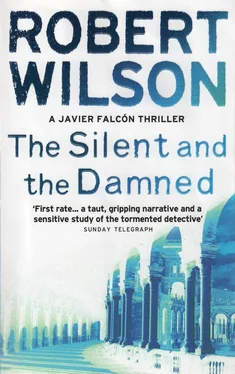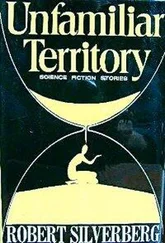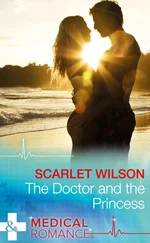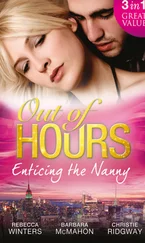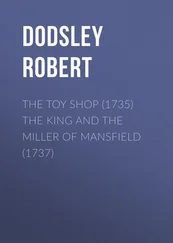'The only recent developments I know about are Rafael Vega's death and me volunteering to help his son.'
Cristina Ferrera came back from talking to the few neighbours she could find. Ortega had walked his dogs yesterday morning. He'd been out in his car twice at about 11 a.m. and 5 p.m. Both trips were for about an hour and a half each.
'Would you bother to walk your dogs if you were going to kill them?' asked Falcón.
'It seems to have been a routine,' said Ferrera. 'His neighbour walked his dog at the same time. And even condemned men get fed and exercised.'
'Killing them is to do with his admitted selfishness and vanity. They were a part of him, only he knew how to love them,' said Alicia Aguado. 'You saw him yesterday morning before he went out, Javier. What did you talk about then?'
'I was interested in his relationship with Rafael Vega, how he knew him, whether he'd met him through Raúl Jiménez and whether he knew any of the people around those men. I had a photograph of him with some people at a party which seemed to unnerve him. I also talked to him about his son's case. Then 1 left, but – no, that's not quite right. He told me about a recurring dream, then I left, but I came back to ask him about something I'd forgotten and I saw him sink to his knees in the garden, weeping.'
Alicia Aguado asked about the dream and he described Ortega's vision of himself in a field with his hurting hands.
'I read your report of your first meeting,' said Ferrera. 'He was very different then.'
'Yes, he was much more the actor. Most of that interview was performance,' said Falcón. 'He was more serious in subsequent talks. The pressure was building.'
'What were you being accusatory about, Javier?' asked Aguado.
'I don't want to talk about it until I've got it clear in my mind,' he said. 'I've got a lot more work to do on that.'
Jorge called Falcón over for a crime scene conference. They were convinced it was suicide. They had found nothing to lead them to believe it happened any other way. Ortega's fingerprints were over everything. Juan Romero asked the Médico Forense for his opinion.
'Time of death was about 3 a.m. Cause was drowning. There was a single mark on his forehead which probably happened as he fell into the hole. My pre-lab inspection verdict is that he committed suicide.'
Juez Romero signed off the levantamiento del cadáver. Falcón told him that he would inform the next of kin as the dead man had requested. The paramedics removed the body and those of the two dogs. Felipe and Jorge left. Falcón told Ferrera to follow up on the phone numbers on Monday and let her go. He went to the kitchen, found the address book and called Ignacio Ortega on his mobile, which was turned off. He told Romero they would delay telling the press about Ortega's death until his brother had been informed.
The ambulance and cars moved off towards Avenida de Kansas City. A patrol car remained with an officer to keep an eye on the house. The news announcement of Ortega's death might arouse public interest. Falcón offered to take Alicia Aguado home but she was keen to hear a description of the Ortega collection mentioned in the suicide letter.
The collection, which Ortega had moved into the living room when the cesspit cracked, was distributed around one end of the room, the small pieces on tables, the bigger carvings on the floor and the paintings leaning up against the walls. There was a sheet of paper taped to an antique table in the living room listing all the pieces in the collection with their purchase dates and prices. Falcón ran his eye down the eighteen pieces on the list to the Francisco Falcón painting he'd seen on his first visit.
'This is interesting,' he said. 'Ortega bought the Francisco Falcón painting on 15th May 2001. That was after he'd been revealed as a fraud. And he picked it up for a quarter of a million pesetas.'
'What did they used to sell for?'
'He'd have had to pay around two million,' said Falcón. 'It was a good buy because they've come back up again now. The old-fashioned collectors wanted to get rid of everything they had by Francisco Falcón when the news first broke. But now there's a different market for the work. They're a sort of post-modern crowd who have a new take on "What is real art?" Between them and the infamy hunters and the celebrity criminal ghouls they've rebuilt the price.'
'So he knew Francisco, but only bought one of his paintings once he'd been exposed,' said Aguado. 'That's telling us something.'
He told her about the Picasso drawing of a centaur and how Ortega used it as a test.
'Talk me down the list,' she said. 'I'll stop you if I need more information.'
'Two carved African ebony figures of boys holding spears, Ivory Coast. One mask, Zaire.'
'Describe the mask, Javier,' she said. 'Actors are experts on masks.'
'It's sixty centimetres long, twenty wide. It has red hair, two slit eyes and a long nose. There's pieces of bone and shards of mirror stuck in the mouth like teeth. It's a pretty terrifying thing, but beautifully shaped. Bought in New York in 1996 for nine hundred and fifty dollars.'
'It sounds like a witch doctor's mask. Carry on.'
'The next four are Meissen figurines, all male.'
'I hate figurines,' she said.
'One mirror, full length with a rococo gilt frame. Paris. 1984. Nine thousand francs.'
'Something to look at himself in with a halo of gold.'
'A Roman glass bottle, opaque with the colours of the rainbow. A set of eight silver coins, also Roman. One gilt chair – Louis XV. London 1982. For which he paid nine thousand pounds.'
'That's expensive enough to be his throne.'
'One horse, bronze at full gallop – Roman. One bull's head – Greek. One shard of pottery of a boy running – Greek. A piece by Manuel Rivera called Anatomia en el Espejo.'
'Anatomy through a mirror? What's that?'
'Metal fabrics on wood. Mirror image. Difficult to describe,' said Falcón. 'There's also a painting here by Zobel called Dry Garden and an Indian erotic painting.'
'What sort of eroticism?'
'A pretty graphic depiction of a man with an oversized penis having sex with a woman,' said Falcón. 'And that's it.'
'A very complicated man with his figures, masks and mirrors,' she said. 'Is there any indication as to how the collection was originally set out?'
Falcón looked through the drawers of the antique desk and found a series of photographs of the collection, each one dated on the back. In all of them Pablo Ortega was seated on the Louis XV chair. He found the most recent shot, which included all the pieces except the Indian erotic painting and the Zobel. Then he realized that the Zobel was positioned so that Ortega was looking at it and the Indian painting was such a recent acquisition it hadn't been included. He described the layout to Alicia Aguado.
'He seems to be showing us the Beauty and the Beast. The mask from Zaire is both. All the pieces on one side seem to be the stuff of beauty, nobility and magnificence: Picasso's centaur, the bull's head, the galloping horse, the running boy. I'm simplifying it because there are complications. Centaurs are monsters, too. What's the boy running away from? There are the coins and the beautiful, but empty, Roman bottle. Also the Rivera painting reflected in the gilt mirror. I don't understand that.'
'And the other side?'
'The fraudulent Francisco Falcón. Ortega spent his life pretending. The beautiful figurines locked in porcelain – the actor in his roles. And the inference of "I am as hollow as they are". The mirror is a hard, reflective thing that gilds his narcissism.'
'And the black ebony boys?'
'I don't know – guarding his secrets or keeping them?'
'And why is he always looking at the Dry Garden?'
Читать дальше
Конец ознакомительного отрывка
Купить книгу
